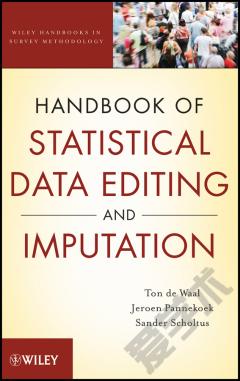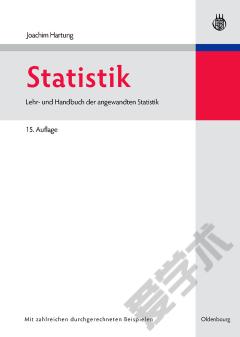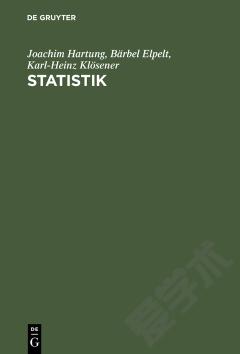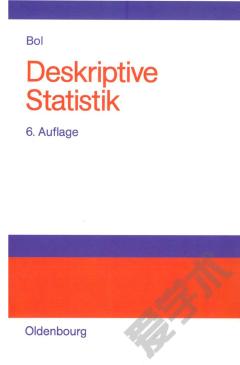Handbook of Statistical Data Editing and Imputation
Preface. 1 Introduction to statistical data editing and imputation. 1.1 Introduction. 1.2 Statistical data editing and imputation in the statistical process. 1.3 Data, errors, missing data and edits. 1.4 Basic methods for statistical data editing and imputation. 1.5 An edit and imputation strategy. 2 Methods for deductive correction. 2.1 Introduction. 2.2 Theory and applications. 2.3 Examples. 2.4 Summary. 3 Automatic editing of continuous data. 3.1 Introduction. 3.2 Automatic error localisation of random errors. 3.3 Aspects of the Fellegi-Holt paradigm. 3.4 Algorithms based on the Fellegi-Holt paradigm. 3.5 Summary. 4 Automatic editing: extensions to categorical data. 4.1 Introduction. 4.2 The error localisation problem for mixed data. 4.3 The Fellegi-Holt approach. 4.4 A branch-and-bound algorithm for automatic editing of mixed data. 4.5 The Nearest-neighbour Imputation Methodology. 5 Automatic editing: extensions to integer data. 5.1 Introduction. 5.2 An illustration of the error localisation problem for integer data. 5.3 Fourier-Motzkin elimination in integer data. 5.4 Error localisation in categorical, continuous and integer data. 5.5 A heuristic procedure. 5.6 Computational results. 5.7 Discussion. 6 Selective editing. 6.1 Introduction. 6.2 Historical notes. 6.3 Micro-selection: the score function approach. 6.4 Selection at macro-level. 6.5 Interactive editing. 6.6 Summary and conclusions. 7 Imputation. 7.1 Introduction. 7.2 General issues in applying imputation methods. 7.3 Regression imputation. 7.4 Ratio imputation. 7.5 (Group) mean imputation. 7.6 Hot deck donor imputation. 7.7 A general imputation model. 7.8 Imputation of longitudinal data. 7.9 Approaches to variance estimation with imputed data. 7.10 Fractional imputation. 8 Multivariate imputation. 8.1 Introduction. 8.2 Multivariate imputation models. 8.3 Maximum likelihood estimation in the presence of missing data. 8.4 Example: the public libraries. 9 Imputation under edit constraints. 9.1 Introduction. 9.2 Deductive imputation. 9.3 The ratio hot deck method. 9.4 Imputing from a Dirichlet distribution. 9.5 Imputing from a singular normal distribution. 9.6 An imputation approach based on Fourier-Motzkin elimination. 9.7 A sequential regression approach. 9.8 Calibrated imputation of numerical data under linear edit restrictions. 9.9 Calibrated hot deck imputation subject to edit restrictions. 10 Adjustment of imputed data. 10.1 Introduction. 10.2 Adjustment of numerical variables. 10.3 Adjustment of mixed continuous and categorical data. 11 Practical applications. 11.1 Introduction. 11.2 Automatic editing of environmental costs. 11.3 The EUREDIT project: an evaluation study. 11.4 Selective editing in the Dutch Agricultural Census. Index.
{{comment.content}}








 京公网安备 11010802027623号
京公网安备 11010802027623号